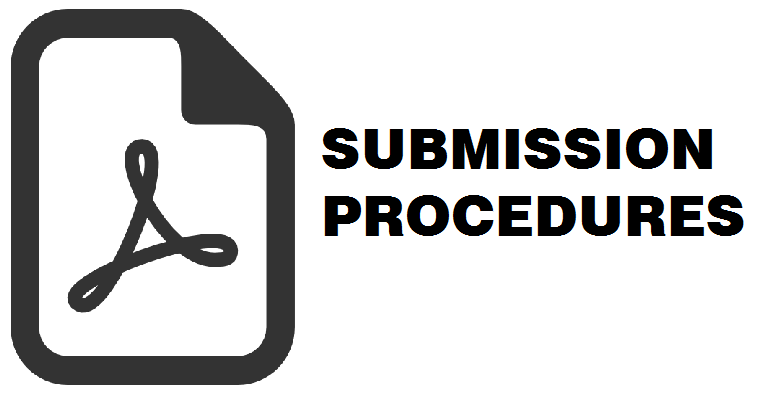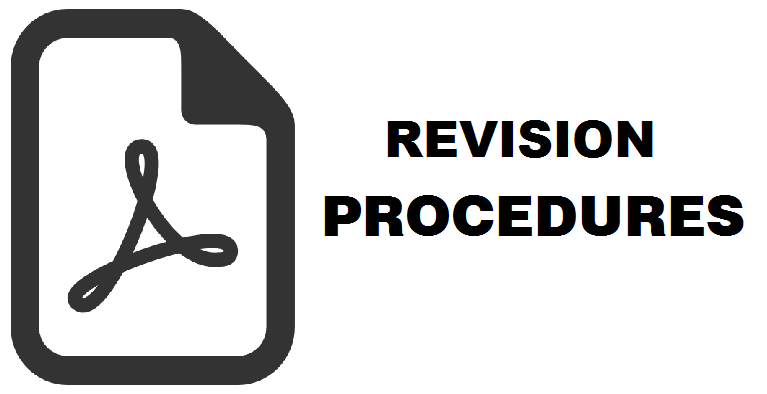Impact of Land-Use Change on Soil Carbon Dynamics in Tropical Peatland, West Kalimantan- Indonesia
Rossie Wiedya Nusantara(1*), Sudarmadji Sudarmadji(2), Tjut S. Djohan(3), Eko Haryono(4)
(1) Faculty of Agriculture Tanjungpura University, Pontianak, West Kalimantan, Indonesia
(2) Faculty of Geography , Universitas Gadjah Mada,Yogyakarta, Indonesia
(3) Faculty of Biology, Universitas Gadjah Mada, Yogyakarta, Indonesia
(4) Faculty of Geography , Universitas Gadjah Mada,Yogyakarta, Indonesia
(*) Corresponding Author
Abstract
The conversion of tropical peat forest to other land uses can reduce organic carbon (C) and stable C isotope (δ13C) of peat soil. This research aimed at analyzing the soil organic-C and δ13C of peatland with respect to maturity (fibric, hemic and sapric) in five types of peatland use, which included primary peat forest, secondary peat forest, shrubs, oil palm plantations, and cornfield in West Kalimantan. Analysis of peat soil samples includes organic C with Loss in ignition method and δ13C using an isotope ratio mass spectrometry(IRMS) method. Organic-C at fibric was higher than hemic and sapric, respectively (57.2%, 57.0%, 56.4%), meanwhile, organic-C was the highest on primary peat forest, followed by on secondary peat forest, oil palm plantation, cornfield, and shrubs, respectively 57.1%, 57.0%, 56.4%, 56.0%. The cause of increasing and decreasing organic C and δ13C due to land-use change due to changes in vegetation, burning during tillage, and age of organic matter of peat soil. This condition causes the opening of natural peat ecosystems and changes in anaerobic to aerobic conditions.
Keywords
Full Text:
PDFReferences
Agus, Fahmuddin, Kurniatun Hairiah, Anny Mulyani, and World Agroforestry Centre (ICRAF). 2011. Pengukuran cadangan karbon tanah gambut. Bogor, Indonesia: World Agroforestry Centre (ICRAF).
Akagi, Tasuku, Kotaro Minomo, Natsuki Kasuya, and Toshio Nakamura. 2004. Variation in carbon isotopes of bog peat in the ozegahara peatland, Japan. Geochemical Journal, 38 (4): 299–306. https://doi.org/10.2343/geochemj.38.299.
Balesdent, J, E Besnard, D Arrouays, and C Chenu.1998. The Dynamics of carbon in particle-size fractions of soil in a forest-cultivation sequence, Plant and soil, 201:49-51..
Beach, Timothy, Sheryl Luzzadder-Beach, Richard Terry, Nicholas Dunning, Stephen Houston, and Thomas Garrison. 2011. Carbon Isotopic Ratios of Wetland and Terrace Soil Sequences in the Maya Lowlands of Belize and Guatemala. Catena, 85 (2): 109–18. https://doi.org/10.1016/j.catena.2010.08.014.
Bernoux, Martial, Carlos C Cerri, Christopher Neill, and Jener F.L de Moraes. 1998. The use of stable carbon isotopes for estimating soil organic matter turnover rates. Geoderma, 82 (1–3): 43–58. https://doi.org/10.1016/S0016-7061(97)00096-7.
Billings, S. A., and D. D. Richter. 2006. Changes in stable isotopic signatures of soil nitrogen and carbon during 40 years of forest development. Oecologia, 148 (2): 325–33. https://doi.org/10.1007/s00442-006-0366-7.
Brady, Nyle C., and Ray R. Weil. 2007. The nature and properties of soils, 14th Edition. 14 edition. Upper Saddle River, N.J: Pearson.
Choi, Woo-Jung, Scott X. Chang, and Jagtar S. Bhatti. 2007. Drainage affects tree growth and c and n dynamics in a minerotrophic peatland. Ecology, 88 (2): 443–53. https://doi.org/10.1890/0012-9658(2007)88[443:datgac]2.0.CO;2.
Del Galdo, Ilaria, Johan Six, Alessandro Peressotti, and M. Francesca Cotrufo. 2003. Assessing the impact of land-use change on soil C sequestration in agricultural soils by means of organic matter fractionation and stable C isotopes. Global Change Biology, 9 (8): 1204–13. https://doi.org/10.1046/j.1365-2486.2003.00657.x.
Farmer, Jenny. 2011. Assessing existing peatland models for their applicability for modelling greenhouse gas emissions from tropical peat soils. Translated by Jenny Farmer, Robin Matthews, Jo U Smith, Pete Smith, and Brajesh K Singh. Current opinion in environmental sustainability, 3 (5): 339–49. https://doi.org/10.1016/j.cosust.2011.08.010.
———. 2014. Comparison of methods for quantifying soil carbon in tropical peats. Translated by Jenny Farmer, Robin Matthews, Pete Smith, Charlie Langan, Kristell Hergoualc’h, Louis Verchot, and Jo U. Smith. Geoderma, 214-215: 177–83. https://doi.org/10.1016/j.geoderma.2013.09.013.
Firdaus, Mohd Suffian, Seca Gandaseca, Osumanu Haruna Ahmed, and A. M. Nik Muhamad. 2010. Effect of converting secondary tropical peat swamp forest into oil palm plantation on selected peat soil physical properties. American Journal of Environmental Sciences, 6 (4): 402–5.
Hooijer, A., S. Page, J. G. Canadell, M. Silvius, J. Kwadijk, H. Wösten, and J. Jauhiainen. 2010. Current and future CO2 emissions from drained peatlands in Southeast Asia. Biogeosciences, 7 (5): 1505–14. https://doi.org/10.5194/bg-7-1505-2010.
Jones, M. C., D. M. Peteet, and R. Sambrotto. 2010. Late-glacial and Holocene δ15n and δ13c variation from a Kenai Peninsula, Alaska Peatland. Paleogeography, Palaeoclimatology, Palaeoecology, 293 (1/2): 132–43.
Krüger, J. P., J. Leifeld, S. Glatzel, S. Szidat, and C. Alewell. 2015. Biogeochemical indicators of peatland degradation – a case study of a temperate bog in Northern Germany. Biogeosciences, 12 (10): 2861–71. https://doi.org/10.5194/bg-12-2861-2015.
Lane, Chad S., Sally P. Horn, and Claudia I. Mora. 2004. Stable carbon isotope ratios in lake and swamp sediments as a proxy for prehistoric forest clearance and crop cultivation in the neotropics. Journal of Paleolimnology, 32 (4): 375–81. https://doi.org/10.1007/s10933-004-0259-x.
Limpens, J, F Berendse, C Blodau, J G Canadell, C Freeman, J Holden, N Roulet, H Rydin, and G Schaepman-Strub. 2008. Peatlands and the carbon cycle: from local processes to global implications – a synthesis. Biogeosciences, 5: 1475-1491.
Marin-Spiotta, Erika, Whendee L. Silver, Christopher W. Swanston, and Rebecca Ostertag. 2009. Soil organic matter dynamics during 80 years of reforestation of tropical pastures. Global Change Biology, 15 (6): 1584–97. https://doi.org/10.1111/j.1365-2486.2008.01805.x.
Monde, A., N. Sinukaban, K. Murtilaksono, and N. Pandjaitan. 2008. Dinamika karbon (C) akibat alih guna lahan hutan menjadi lahan petanian. Jurnal Agroland, 15 (1): 22 26.
Notohadiprawiro. T. 1985. Selidik cepat ciri tanah di lapangan. Ghalia Indonesia.
Nusantara, Rossie Wiedya, and Tjut Sugandawaty Djohan. 2014. Emisi CO2 tanah akibat alih fungsi lahan hutan rawa gambut di Kalimantan Barat. 21 (3): 9.
Ojanen, Paavo, Kari Minkkinen, Annalea Lohila, Tiina Badorek, and Timo Penttilä. 2012. Chamber measured soil respiration: a useful tool for estimating the carbon balance of peatland forest soils. Forest Ecology and Management, 277: 132–40. https://doi.org/10.1016/j.foreco.2012.04.027.
Page, Susan E, Christopher J Banks, and John O Rieley. 2011. Tropical peatlands: distribution, extent and carbon storage – uncertainties and knowledge gaps, 8.
Page, Susan, Agata Hosciło, Henk Wösten, Jyrki Jauhiainen, Marcel Silvius, Jack Rieley, Henk Ritzema, et al. 2009. Restoration ecology of lowland tropical peatlands in Southeast Asia: Current Knowledge and Future Research Directions. Ecosystems, 12 (6): 888–905. https://doi.org/10.1007/s10021-008-9216-2.
Page, Susan, John O’Neil Rieley, and Christopher Banks. 2010. Global and regional importance of the tropical peatland carbon pool. Global Change Biology, 17 (2): 798. https://doi.org/10.1111/j.1365-2486.2010.02279.x.
Prentice, A. J., and E. A. Webb. 2010. A comparison of extraction techniques on the stable carbon-isotope composition of soil humic substances. Geoderma, 155 (1/2): 1–9.
Qiming, Liu, Wang Shijie, Piao Hechun, and Ouyang Ziyuan. 2003. The variation of soil organic matter in a forest-cultivation sequence traced by stable carbon isotopes. Chinese Journal of Geochemistry, 22 (1): 83–88. https://doi.org/10.1007/BF02831548.
Radjagukguk, Bostang. 2000. Perubahan sifat-sifat fisik dan kimia tanah gambut akibat reklamasi lahan gambut untuk pertanian. Jurnal Ilmu Tanah Dan Lingkungan 2 (2000). http://i-lib.ugm.ac.id/jurnal/detail.php?dataId=6467.
Rhoades, Charles C., Gregory E. Eckert, and David C. Coleman. 2000. Soil carbon differences among forest, agriculture, and secondary vegetation in Lower Montane Ecuador. Ecological Applications, 10 (2): 497. https://doi.org/10.2307/2641109.
Sarkhot, D. V. 2007. Effects of forest management intensity on carbon and nitrogen content in different soil size fractions of a North Florida spodosol. Translated by D. V. Sarkhot, N. B. Comerford, E. J. Jokela, and J. B. Reeves III. Plant and Soil, 294 (1–2): 291–303. https://doi.org/10.1007/s11104-007-9255-z.
Satrio, A. E., S. Gandaseca, O. H. Ahmed, and N. M. A. Majid. 2009. Effect of logging operation on soil carbon storage of a tropical peat swamp forest. American Journal of Environmental Sciences, 5 (6): 748–52.
Stuiver, Minze, and Thomas F. Braziunas. 1987. Tree cellulose 13 c/ 12 c isotope ratios and climatic change. Nature, 328 (6125): 58. https://doi.org/10.1038/328058a0.
Tan, Zhengxi, and Rattan Lal. 2005. Carbon sequestration potential estimates with changes in land use and tillage practice in Ohio, USA. Agriculture, Ecosystems & Environment, 111 (1–4): 140–52. https://doi.org/10.1016/j.agee.2005.05.012.
Tiessen, H., J. W. B. Stewart, and J. R. Bettany. 1982. Cultivation effects on the amounts and concentration of carbon, nitrogen, and phosphorus in grassland soils. Agronomy Journal, 74 (5): 831. https://doi.org/10.2134/agronj1982.00021962007400050015x.
Tomich, T. P, Van Noordwijk, M., and Budidarsono, s., eds. 1985. alternatives to slash-burn in Indonesia: Summary Report and Synthesis of Phase II. ICRAF.
Trumbore, Susan. 2000. Age of soil organic matter and soil respiration: radiocarbon constraints on belowground C dynamics. Ecological Applications, 10 (2): 14.
Ueda, Shingo, Chun-Sim U. Go, Shigehiro Ishizuka, Haruo Tsuruta, Anas Iswandi, and Daniel Murdiyarso. 2005. Isotopic assessment of CO2 production through soil organic matter decomposition in the tropics. Nutrient Cycling in Agroecosystems, 71 (1): 109–16. https://doi.org/10.1007/s10705-004-1197-8.
Usuga, Juan Carlos Loaiza, Jorge Andrés Rodríguez Toro, Mailing Vanessa Ramírez Alzate, and Álvaro de Jesús Lema Tapias. 2010. Estimation of biomass and carbon stocks in plants, soil and forest floor in different tropical forests. Forest Ecology and Management, 260 (10): 1906–13. https://doi.org/10.1016/j.foreco.2010.08.040.
Wösten, J. H. M., E. Clymans, S. E. Page, J. O. Rieley, and S. H. Limin. 2008. Peat–water interrelationships in a tropical peatland ecosystem in Southeast Asia. Catena, 73 (2): 212–24. https://doi.org/10.1016/j.catena.2007.07.010.
Article Metrics
Refbacks
- There are currently no refbacks.
Copyright (c) 2020 Rossie Wiedya Nusantara, Eko Haryono Haryono

This work is licensed under a Creative Commons Attribution-NonCommercial 4.0 International License.
Accredited Journal, Based on Decree of the Minister of Research, Technology and Higher Education, Republic of Indonesia Number 225/E/KPT/2022, Vol 54 No 1 the Year 2022 - Vol 58 No 2 the Year 2026 (accreditation certificate download)
ISSN 2354-9114 (online), ISSN 0024-9521 (print)









